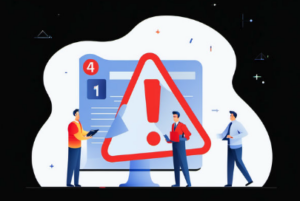The Rise of AI in Hiring
The modern job search landscape has undergone a significant transformation. A major driver of this change is the adoption of artificial intelligence (AI) in recruitment processes. From tech giants to startups, organizations are increasingly relying on AI tools to handle the overwhelming volume of job applications received daily.
In 2025, it is estimated that over 90% of Fortune 500 companies now utilize Applicant Tracking Systems (ATS) with AI capabilities to filter resumes before they are ever seen by a recruiter. This means that, for most job seekers, their resumes are first reviewed by a machine—not a human.
These systems are designed to identify the best-fit candidates by analyzing resumes for specific keywords, formatting, job-related terminology, and experience alignment. While these tools certainly help recruiters streamline their efforts, they also introduce new challenges for applicants. A highly qualified candidate may be overlooked simply because their resume is not optimized for AI scanning.
Therefore, understanding how these systems function and what they prioritize has become essential for job hunters. Without this knowledge, applicants risk having their resumes automatically rejected, even if they are well-suited for the role.
What Is AI Resume Screening?
AI resume screening refers to the use of intelligent software that evaluates, scores, and ranks resumes based on relevance to a job posting. These tools are commonly embedded in Applicant Tracking Systems (ATS) such as Workday, Taleo, Lever, and Greenhouse.
Rather than manually reviewing every resume, recruiters use these platforms to automate the first round of screening. The systems parse the resume, extract key data, and compare it to the job’s requirements. Based on this comparison, resumes are scored or ranked, and only top matches proceed to human review.
Core functions of AI resume screening include:
-
Keyword Matching: AI scans for specific keywords and phrases from the job description.
-
Formatting Analysis: Resumes that are poorly formatted or difficult to parse may be excluded.
-
Experience Matching: The tool checks whether the applicant has the required years of experience, job titles, or industries.
-
Skill Extraction: AI highlights specific skills that align with job requirements.
-
Ranking & Filtering: Candidates are ranked, and only those meeting a certain threshold are passed on.
These systems are not perfect. However, they have become incredibly influential in shaping who moves forward in a hiring pipeline. As such, resume optimization must begin with the assumption that a machine will read the document first.
How ATS and AI Algorithms Work
To better tailor resumes for AI systems, it helps to understand how these algorithms operate behind the scenes.
Parsing and Structuring Data
When a resume is uploaded, the ATS first parses the document. This means it breaks down the content into data fields such as name, contact information, education, work history, and skills. If a resume has non-standard formatting (e.g., columns, tables, or graphics), parsing errors may occur—resulting in incomplete or inaccurate data extraction.
Keyword Matching
AI then scans the parsed resume for keywords that match those in the job description. For example, if a job post mentions “project management,” “Agile,” and “JIRA,” then a resume lacking these exact terms may receive a low match score.
Even slight variations (e.g., using “scrum methodology” instead of “Agile”) might confuse the system unless it’s programmed for synonym recognition. Therefore, mirroring the job post language is critical.
Experience and Skills Analysis
Years of experience, educational background, certifications, and technical skills are compared with the job requirements. Some systems even apply weight to different categories. For instance, technical skills might carry more value than soft skills for engineering roles.
Resume Scoring and Ranking
After analyzing the data, the system assigns a relevance score to each resume. Recruiters often set filters—such as “top 10 resumes” or “minimum score of 85%”—to manage their shortlist. Resumes scoring below the threshold are automatically rejected.
This process, while efficient, underscores the importance of precision and intentionality in resume writing. Failure to include the right keywords or use clear formatting can result in being filtered out, regardless of actual qualifications.
Common Mistakes That Lead to AI Rejection
Even well-qualified candidates may find their resumes rejected due to avoidable errors. Some of the most common mistakes include:
1. Overusing Design Elements
Using images, icons, charts, or creative layouts may appeal to human eyes, but confuse AI. Many systems cannot read visual content or multi-column formats correctly, which can cause critical data to be lost.
2. Submitting the Wrong File Type
PDFs may seem professional, but certain ATS systems struggle to extract data from them, depending on how they are created. While some platforms have improved PDF parsing, using a standard .docx file is often safer.
3. Ignoring the Job Description
Many applicants submit the same generic resume to every job. However, if a resume doesn’t reflect the language or skills listed in the job post, it is unlikely to be matched. Tailoring your resume for each job greatly increases the chances of success.
4. Using Uncommon Headings
Creative headings like “My Journey” or “Career Roadmap” may confuse the parser. Instead, stick to conventional section titles like “Experience,” “Education,” “Skills,” and “Certifications.”
5. Skipping Keywords
Leaving out essential keywords or phrases listed in the job post can result in low relevance scores. Without those triggers, AI may assume the applicant is unqualified, even if that is not the case.
How to Optimize a Resume for AI Screening
Creating an ATS-friendly resume requires more than good writing. It demands strategic formatting, targeted keyword use, and clear organization. Here’s how job seekers can optimize their resumes for AI in 2025:
1. Match Keywords Exactly
Review the job posting and identify frequently used keywords, such as required tools, programming languages, or certifications. Incorporate these exact terms into your resume in a natural way.
Example: If the job post says “Experience with Adobe Photoshop,” use that exact phrase instead of saying “photo editing software.”
2. Use a Simple, Clean Format
-
Avoid columns, tables, graphics, and headers/footers.
-
Use a single-column layout.
-
Stick with standard fonts like Arial, Calibri, or Times New Roman.
-
Use bullet points, not paragraphs, for achievements and responsibilities.
3. Standardize Section Titles
Use clear, industry-accepted headers:
-
Professional Summary
-
Work Experience
-
Education
-
Skills
-
Certifications
This ensures that ATS software can accurately interpret your resume structure.
4. List Hard and Soft Skills Separately
Hard skills (e.g., “Python,” “Excel”) are more likely to be matched by AI. Soft skills (e.g., “communication,” “leadership”) are still important, but should not be prioritized for keyword inclusion.
5. Use Resume Scanning Tools
Websites like Jobscan, ResumeWorded, and Teal can analyze how well your resume aligns with a job description. These tools simulate how ATS systems scan resumes and offer improvement suggestions.
6. Customize for Each Job Application
It may take more time, but tailoring your resume for each job—based on specific keywords and required skills—can dramatically improve AI scores and lead to more interviews.
AI Doesn’t Replace Human Hiring—Yet
Although AI plays a powerful role in the screening process, it is not yet a replacement for human recruiters. Most hiring processes still involve multiple human touchpoints, particularly during interviews and final selections.
AI is used to reduce workload, not make hiring decisions independently. Once resumes are filtered, human recruiters still review top-ranking applications. This means your resume must appeal to both systems: machines and people.
The Hybrid Approach
-
AI helps shortlist candidates quickly based on relevance.
-
Humans then evaluate culture fit, communication skills, and unique experiences.
This underscores the importance of balancing optimization with authenticity. While tailoring for AI, applicants must also ensure the resume tells a compelling story for the human reader.
Prepare Smarter, Not Harder
In today’s tech-driven hiring environment, job seekers cannot afford to ignore the impact of AI. With resumes being scanned, scored, and ranked by algorithms before reaching a recruiter’s desk, strategic resume optimization has become essential—not optional.
By using targeted keywords, adopting clean formatting, and customizing for each job post, applicants can navigate the AI screening process more effectively. Although the technology may seem intimidating, it can also be leveraged to your advantage.
With the right preparation and understanding, job seekers can increase their chances of landing interviews—even in a competitive and automated job market.
Feel free to check out our other website at :aibrainpowered.com











